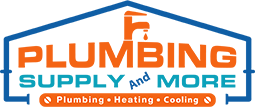Power Tools
- YJack Charging Kit, with Wireless Pressure and Temperature ProbesBrand: Yellow JacketSKU: 2026488$939.64 37% off $1,485.53
- Digital Manifold Kit Hoses And BackpackBrand: Ritchie Engineering CompanySKU: 2026481$821.19 37% off $1,295.61
- Charging Scale, Wireless RefrigerantBrand: Ritchie Engineering CompanySKU: 2026478$273.69 40% off $457.65
- High Efficiency Particulate Air, 2 Gallon Wet/Dry VacuumBrand: Milwaukee ToolSKU: 2012004$24.98 26% off $33.90
- Driver Bit Set, Driver Bit, Compact Magnetic Bit Holder, Shockwave Impact Duty, 54PCBrand: Milwaukee ToolSKU: 2035324$29.99 28% off $41.52
- Multi-Material Cutting, Multi-Tool Blade Variety Pack, Multi-Material Oscillating, Carbide Teeth, 3 pieceBrand: Milwaukee ToolSKU: 2032258$38.97 29% off $54.51
- 1-3/8" Multi-Material Blade, Titanium Enhanced Carbide Teeth, 1 PackBrand: Milwaukee ToolSKU: 2032256$19.97 25% off $26.64
- 5/32" X 6" X 8" Rotary Hammer Drill Bits,SDS PLUS,solid head carbide, 4-CutterBrand: Milwaukee ToolSKU: 2032255$19.28 32% off $28.20
- Gauge Variable Speed Nibbler, 16-Gauge, 12V M12Brand: Milwaukee ToolSKU: 2030475$229.00 31% off $330.86
- Cutter SDS Plus Rotary Hammer Drill Bits, 5"PieceBrand: Milwaukee ToolSKU: 2029951$36.51 39% off $59.99
- Stick Transfer Pump,9 Gallons Per Minute, M12 BatteryBrand: Milwaukee ToolSKU: 2027883$199.00 31% off $288.99
- Tool Tray, Quick Adjust Dividers, 25lbs CapacityBrand: Milwaukee ToolSKU: 2026680$39.97 24% off $52.67
- 4-1/2" Metal Cutting Blades, Diamond Cut-Off Wheel, Steel HeadBrand: Milwaukee ToolSKU: 2026176$16.40 30% off $23.42
- 7/16" Large Thread Quick Change Arbor, No Wobble, ShankBrand: Milwaukee ToolSKU: 2026175$23.97 23% off $31.01
- 7/16" Large Thread Quick Change Arbor, ShankBrand: Milwaukee ToolSKU: 2026173$22.97 26% off $31.01
- 6" Bi-Metal Hole Saw Bulk, Rip Guard 3.5 TPIBrand: Milwaukee ToolSKU: 2026170$53.77 42% off $92.31
- 5" Bi-Metal Hole Saw Bulk, Rip Guard 3.5 TPIBrand: Milwaukee ToolSKU: 2026169$43.97 33% off $65.90
- 4-3/4" Bi-Metal Hole Saw Bulk, Rip Guard 3.5 TPIBrand: Milwaukee ToolSKU: 2026168$39.97 33% off $59.36
- 4-1/2"Bi-Metal Hole Saw Bulk, Rip Guard 3.5 TPIBrand: Milwaukee ToolSKU: 2026167$36.97 31% off $53.55
- 2-3/4" Bi-Metal Hole Saw Bulk, Rip Guard 3.5 TPIBrand: Milwaukee ToolSKU: 2026161$16.97 7% off $18.18
- 2-5/8" Bi-Metal Hole Saw Bulk, Rip Guard 3.5 TPIBrand: Milwaukee ToolSKU: 2026160$15.97 12% off $18.18
- 2-9/16" Bi-Metal Hole Saw Bulk, Rip Guard 3.5 TPIBrand: Milwaukee ToolSKU: 2026159$15.57 14% off $18.18
- 2-1/2" Bi-Metal Hole Saw Bulk, Rip Guard 3.5 TPIBrand: Milwaukee ToolSKU: 2026158$15.27 16% off $18.18
- 2-1/4"Bi-Metal Hole Saw Bulk, Rip Guard 3.5 TPIBrand: Milwaukee ToolSKU: 2026157$13.97 18% off $16.95
- 2-1/8" Bi-Metal Hole Saw Bulk, Rip Guard 3.5 TPIBrand: Milwaukee ToolSKU: 2026156$13.47 21% off $16.95
Power Tools are electrically or pneumatically powered devices designed to perform tasks more efficiently than manual hand tools. Unlike hand tools that rely on physical effort, power tools use motors to enhance speed, precision, and overall performance. This makes them ideal for demanding tasks across various applications, including construction, woodworking, metalworking, and more.
Key Uses of Power Tools:
- Efficiency: Completes tasks faster and with greater precision compared to manual methods.
- Versatility: Handles a wide range of applications from drilling and cutting to sanding and grinding.
- Power: Provides the strength and capability needed for heavy-duty tasks and large projects.
Frequently Asked Questions About Power Tools
- What are power tools, and how do they differ from hand tools?
- Power tools are devices powered by electricity or compressed air that perform tasks with greater speed and efficiency than manual hand tools. Unlike hand tools, which require physical effort and manual operation, power tools use motors to increase precision and reduce the physical strain on the user. This makes power tools ideal for demanding tasks in construction, woodworking, metalworking, and other applications where efficiency and performance are critical.
- What are some common types of power tools, and how do I choose the right ones for my projects?
- Common types of power tools include:
- Drills: Essential for drilling holes and driving screws, available in corded and cordless models.
- Saws: Used for cutting materials, with types like circular saws, jigsaws, and reciprocating saws.
- Sanders: Smooth and finish surfaces, including belt sanders, orbital sanders, and detail sanders.
- Grinders: Ideal for grinding, polishing, and cutting metal and masonry.
- Routers: Used for shaping wood and creating decorative edges.
- What are the safety considerations and best practices when using power tools?
- Safety is paramount when using power tools. Follow these best practices:
- Adhere to manufacturer instructions and use appropriate personal protective equipment (PPE), such as safety glasses, gloves, and ear protection.
- Maintain a clean and organized workspace, and securely fasten materials before cutting or drilling.
- Keep hands and body parts away from moving parts to avoid injury.
- Disconnect power sources when changing accessories or performing maintenance to prevent accidental operation.
- Regularly maintain your tools by sharpening blades, lubricating moving parts, and inspecting for wear or damage to ensure safe and effective operation.
Explore our wide selection of power tools to find the perfect solutions for your projects. Whether you’re a professional tradesperson or a DIY enthusiast, our high-quality tools are designed to meet your needs for efficiency, precision, and durability. Browse our collection to equip yourself with the best power tools for your tasks and enhance your productivity.





































